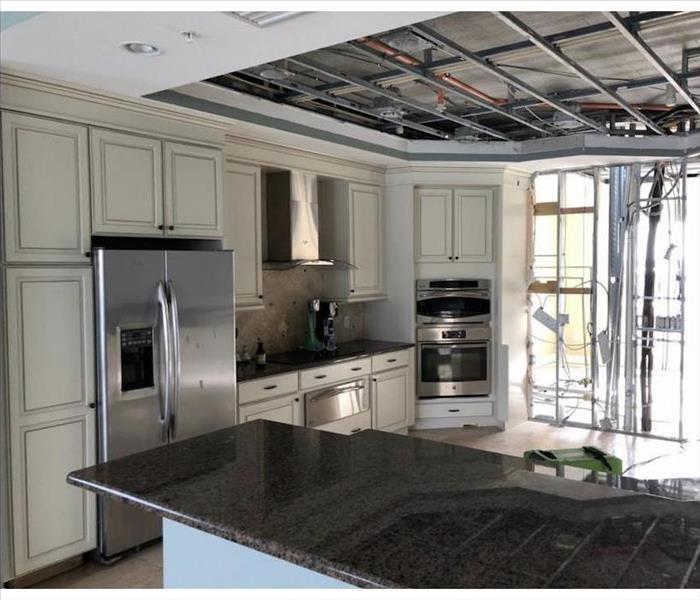Water-Damaged Upholstery: Cleaning for Safety and Longevity
6/12/2024 (Permalink)
 In this blog, we discuss effective strategies for cleaning upholstery after water damage and restoring your fabric items to their preloss condition.
In this blog, we discuss effective strategies for cleaning upholstery after water damage and restoring your fabric items to their preloss condition.
Water damage in your home can be a disruptive and stressful experience, especially when it affects your upholstered furniture and fabric items. Knowing how to properly clean and restore water-damaged upholstery is crucial for ensuring safety and preserving the longevity of your belongings. In this blog, we will discuss effective strategies for cleaning upholstery after water damage and restoring your fabric items to their preloss condition.
Assessing the Damage
The first step in cleaning water-damaged upholstery is to assess the extent of the damage. Look for signs of water saturation, staining, discoloration, and any potential mold or mildew growth on the fabric. Understanding the scope of the damage will guide your cleaning and restoration efforts.
Dry the Upholstery
After assessing the damage, it's important to begin the drying process as soon as possible. Use fans, dehumidifiers, and open windows to promote air circulation and assist in drying out the upholstery. Avoid using high heat or direct sunlight, as this may cause further damage to the fabric.
Clean and Sanitize
Once the upholstery is adequately dried, it's time to clean and sanitize the fabric. Use a gentle upholstery cleaner or a mixture of mild detergent and water to spot-clean the affected areas. Test the cleaning solution on a small, inconspicuous area first to ensure it does not cause damage or discoloration.
Blot, Do Not Rub
When cleaning water-damaged upholstery, it's crucial to blot the fabric with a clean, dry cloth or sponge to absorb excess moisture and cleaning solution. Avoid rubbing the fabric, as this can spread the stain and cause damage to the fibers.
Professional Fabric Restoration
In cases of severe water damage or extensive staining, consider seeking professional assistance for fabric restoration and upholstery cleaning. Professional restoration technicians have the expertise, tools, and techniques to effectively clean and restore water-damaged upholstery, ensuring the best possible outcome for your fabric items.
Prevent Mold and Mildew
Water damage can create ideal conditions for mold and mildew growth on upholstery. To prevent this, ensure that the fabric is thoroughly dried and properly ventilated. Consider using a dehumidifier to control humidity levels and inhibit mold and mildew formation.
Consult Professional Contents Restoration Services
If your upholstered furniture and fabric items have sustained significant water damage, consider consulting professional content restoration services. These specialists can assess the damage, provide expert cleaning and restoration, and help salvage your valuable possessions.
Regular Maintenance and Care
To maintain the longevity and cleanliness of your upholstery, implement regular maintenance and care practices. Vacuum your upholstered furniture regularly, use fabric protectors to guard against future spills, and promptly address any water damage or stains to prevent long-term damage.
In conclusion, cleaning water-damaged upholstery is essential for ensuring the safety and longevity of your fabric items. By promptly assessing the damage, thoroughly drying the fabric, using gentle cleaning methods, and seeking professional assistance when needed, you can effectively clean and restore water-damaged upholstery. Remember, for comprehensive fabric restoration and upholstery cleaning services, consider reaching out to SERVPRO® for professional guidance and support. Our trained professionals can help you navigate the restoration process and preserve the beauty and integrity of your upholstered furniture and fabric items.






 24/7 Emergency Service
24/7 Emergency Service